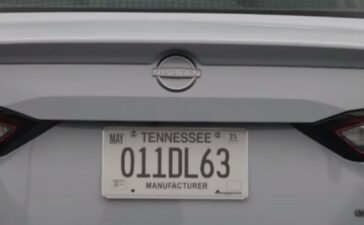Hi there. Today we are going to discuss the Prius check engine light. Similar to other vehicles, Prius check engine light is a way of your vehicle’s communication with you. It’s an indicator of an issue and a warning for you to take proper action. However, it’s a discomforting and concerning experience for the driver to face this light at the moment that they don’t expect it.
A check engine light isn’t always showing a disaster. It indicates a range of issues from minor issues like a loose gas cap to more serious issues like catalytic converter malfunction or engine failure.
One of the most common reasons for checking light illumination is the faulty oxygen sensor. This crucial part has the role of measuring the exhaust gasses. In case of its malfunction, wrong information leads to an imbalance of air-fuel mixture and a drop in performance.
Repairing involves replacing the oxygen sensor that’s not a daunting but vital task to do. Keep in mind that you shouldn’t ignore such an issue as it leads to further damage in the future.
You might also enjoy: Why Did My Traction Control And Check Engine Light Come On?
Deciphering the Toyota Prius Check Engine Light: More Than Just a Warning
I’ve been working with different Prius models for many years and I figured out the complexity of their check engine light. This light plays a crucial role in a vehicle’s health and performance.
The Role of the Check Engine Light in Your Prius
The check engine light is a direct communication between you and your vehicle’s onboard diagnostic system. Modern cars like Toyota Prius are equipped with an onboard diagnostic system that monitors the whole vehicle’s components.
It controls everything from the correct fuel mixture to emission level and fuel efficiency. In case of any problem, the check light is triggered as a further indicator and symptom of a fault.
Why You Shouldn’t Ignore the Check Engine
Due to my long-term experience in the automotive world and various real-life cases, I Gained valuable knowledge and learned about the check engine light. I provided you with a list of common underlying issues.
-
Cylinder Misfires: A Jolting Experience
One of the common causes that triggers the check light is a cylinder misfire. Once it happens, you experience your vehicle’s juddering or power drop.
Many issues lead to misfires. However, you often notice them by ignition issues. The key is not to ignore this problem because it leads to severe issues after a few days.
-
Spark Plug Issues: The Heartbeat of Your Engine
Spark plugs are vital parts of the ignition system. In case of their failure, you face problems with fuel burning and vehicle efficiency. Dirty or worn-out spark plugs cause misfires, lack of fuel efficiency, and failure in emission tests. Consider regularly checking your spark plugs and replacing them when it’s necessary.
-
Ignition Coil Troubles: A Shock to the System
The ignition coil has the role of empowering spark plugs for ignition. If it doesn’t do its job as properly as it should, you face engine misfires, power loss, and an illuminated check engine light.
-
Fuel Pump Malfunctions: Starving Your Engine
The fuel system has the job of fuel delivery from the fuel tank to the engine. In case of any issue with it, you may struggle to start your car and also, the vehicle faces power loss. The fuel Pump is a vital component for power maintenance of your vehicle so be attentive to its warnings and address them promptly.
-
Injector Issues: Ensuring Proper Fuel Delivery
If injectors are clogged, you will have issues with air and fuel balance in the engine. Clogged or malfunctioning injectors cause engine inefficiencies and reduced performance. In severe cases, it leads to stalking. So it’s important to inspect fuel injectors regularly and consider cleaning them timely.
-
Overheating: A Temperature Tantrum
Overheating is a kind of issue that needs immediate attention as it hurts any kind of engine and the Prius engine is not an exception.
Overheating often happens due to thermostat issues or coolant leaks. Anyway, it’s necessary to address it soon and prevent engine severe damage as a result of high temperature.
-
Faulty Head Gasket: A Critical Seal
The headlight gasket seals the engine combustion chamber. If it fails, white smoke exists from the exhaust or the engine oil may mix with the coolant. As a worn-out head gasket brings many troubles, you’d better regularly inspect it and do timely fixes.
-
Oil Overfill: The Slippery Slope
It might sound surprising but overfilling the oil disturbs the engine’s proper function. Because it leads to leaking as a result of high pressure.
It may even hurt the expensive components of the catalytic converter. To prevent this issue, refer to your manual or consult with a mechanic to find out the proper oil amount for your engine.
-
Emissions-Related Problems: Keeping It Clean
The emission system consists of the catalytic converter, oxygen sensors, and EVAP system. Failure or malfunction of each part triggers the check light. The emission-related check light warns you about both your vehicle’s performance and your environmental footprint. It’s a necessity to address this problem as soon as you notice its first symptoms.
In brief, consider addressing each of these issues promptly to first, ensure your vehicle’s smooth performance and reliability and second, prevent further damages and costlier repairs in the future. The key to doing so is regular maintenance and timely checkups to make sure all of the components are functioning correctly.
You might also enjoy: Volkswagen Check Engine Light: 8 Causes + Fixes [2024]
approaches to solving Prius check engine light
In this section, I want to provide you with repair approaches for check engine lights. Remember that these factors came from my long-term experience in the automotive world and research from valid sources.
Common Causes and Their Fixes
1. Faulty Oxygen Sensor
This sensor monitors the combustion quality and determines the amount of air-fuel mixture. If it fails, your vehicle faces excessive fuel consumption. To resolve the issue, you should replace the faulty sensor.
2. Malfunctioning Catalytic Converter
Failure in this part affects the vehicle’s performance and exhaust emissions. Despite its high price, the only solution is replacing the catalytic converter.
3. Loose Gas Cap
It sometimes resolves by tightening it, however you should replace it in case of signs of wear.
4. Failing Mass Airflow Sensor
It’s designed to measure the amount of air that enters your engine. If it fails, you face rough idling and poor fuel efficiency. The solution involves replacing the faulty sensor.
5. Worn-Out Spark Plugs
Spark plugs are the beginners of an ignition. For higher efficiency, you need to replace worn-out spark plugs regularly.
6. Diagnostic Approach Using an OBD-II Scanner
To diagnose the issue, connect an OBD2 scanner to your vehicle’s OBD2 port. You can often find it under the dashboard.
7. Read the diagnostic trouble codes from the Prius’s onboard computer
Each issue has a unique error code. You can read the error codes and pinpoint the main issue in case you have enough knowledge about it. If you are doubtful, refer to your manual or consider speaking with a mechanic to figure the error codes out.
You might also enjoy: Kia Check Engine Light: 8 Causes + Fixes [2024]
Resetting the Check Engine Light:
-
Using an OBD-II Scanner:
Once you resolved the issue, you can use an OBD2 scanner to reset the check light. But remember not to do it before removing the root cause as it leads to more damage over time.
-
Disconnecting the Battery
You should disconnect the battery, wait for a short period, and then reconnect it. Make sure that you follow safety precautions during the process.
-
Odometer Technique
In this technique, you should preserve the odometer and brake buttons while you’re turning the car on and off at the same time. It’s a bit complex and requires a bit of greasy hands.
-
Ignition On and Off
Turn your vehicle on and off for few times to reset your check engine light.
Keep in mind that if these methods don’t work for you and the check engine light comes back on, there’s a serious underlying cause that isn’t resolved.
Consult with a mechanic to diagnose and fix the issue rather than resetting the warning light. Because sometimes the issue is not as simple as you think so your incorrect diagnosis and repair approach may even cause further damage.
Mastering the OBD-II Scanner: A DIY Guide for Prius Owners
Throughout my years of experience with several vehicles and resolving various check engine light issues, I realized the importance of the OBD-II scanner’s role in diagnosis. These scanners are communication bridges between you and your vehicle. An OBD2 scanner can help us a lot with a check engine light.
-
Getting Started with Your OBD-II Scanner
First of all, you need to provide an OBD2 scanner. You can grind it readily in auto parts shops. Once you find it, you should connect it to your vehicle’s OBD2 port. This 16-pin port is located under the dashboard and near the steering column.
-
Connecting and Interpreting the Codes
After locating the port you need to connect the OBD2 scanner to it. Now it’s time to activate the scanner by turning on your engine to the accessory point. The OBD2 scanner doesn’t need complete engine ignition to function. Now, you can see alphanumeric diagnostic codes that each refer to a specific issue. Interpreting these codes is the key task here.
-
Understanding Diagnostic Trouble Codes
Each diagnostic code has a specific meaning and refers to a unique kind of issue in your Prius. For instance, codes starting with P indicate powertrain while codes starting with C represent chassis issue. In brief, these fuses help us to address the correct area of the problem, whether it’s in the engine, transmission, or computer system.
-
The Importance of Accurate Diagnosis
While it seems simple, interpreting the codes is tricky. You can’t do it correctly by yourself except you have a bit of knowledge or experience. Because for instance, a code that refers to a sensor doesn’t necessarily mean the sensor needs replacement. There may be problems with its wiring or its reading issue.
You might also enjoy: Catalytic Converter Check Engine Light: 8 Things You Must Know
Next Steps after Diagnosis
After gaining error codes from the OBD-II scanner, you should interpret them by using your manual or consulting with a professional. In some cases repair process is as easy as tightening a gas cap while in other cases the issue is a more complex one and needs professional attention.
Each Prius owner or even a regular car enthusiast should be familiar with the OBD-II scanner and its functionality. It saves you time and money by indicating the issue. However, don’t just rely on your interpretation of the error codes.
It’s worth consulting with a professional to ensure you’re standing at the right place. Remember that a correct diagnosis means your issue is half-solved while an incorrect diagnosis means further damages, more complexity, and costlier repairs.
Moreover, there are additional tips and approaches for resetting the check engine light and resolving the root cause. I gain this helpful information from my involvement in several cases and searching for valid resources.
Understanding Common Triggers and Solutions
Many reasons may ultimately lead to check engine light illumination. It can be triggered due to a faulty oxygen sensor, mass air flow sensor, failing catalytic converter, or even a loose gas cap. You can pinpoint the issue using an OBD2 scanner and reading its error codes.
Step-by-Step Resetting Techniques
1. Odometer Technique
it’s a bit complicated task and requires expertise or experience. It involves ensuring your engine is off and then pressing the power button while you’re also pressing the odometer.
During the process, your brakes should be engaged. Be attentive to the digital screen of the Odometer. It’s showing a countdown and once it indicates 000000, the check engine light is restarted.
2. Ignition On and Off
insert your key into the ignition and turn it on and off a few times. You should wait for a short period between these actions. Do this three times and then give yourself a short drive. The check light should restart and if not, there’s still an unsolved problem in your vehicle.
3. Disconnecting the Battery
it’s a bit older approach. You should disconnect the battery, wait for a short period, and then reconnect it. Oat attention that all the vehicle’s computer system is restated when you reconnect the battery.
When to Seek Professional Help
In case you still see the check engine light after all these procedures, it’s a telltale sign of an existing issue in your vehicle. As the issue is more serious, you’d better seek professional help. Ignoring this light compromises the vehicle’s reliability and also makes you go for costlier repairs.
You might also enjoy: Everything You Need to Know About Mazda Check Engine Light
The Importance of Accurate Diagnosis
As you might know, it’s not wise to just reset the check engine light regardless of the underlying issue. You should figure out the main cause using an OBD2 scanner before trying to resolve it.
To ensure the smooth performance of your Toyota Prius, consider sticking to regular maintenance and being aware of warning signs like check engine light.
You can not only ensure your vehicle’s reliability but also save your time and money by knowing common causes of check light illumination and addressing them promptly.
Costs of Prius Repairs and Maintenance: A Personal Insight
One of the factors that you should know about your hybrid vehicle like a Toyota Prius, is its maintenance approaches. Trust me it’s as essential as knowing how to fix the issues. Toyota Prius is a sophisticated car known for its reliability and efficiency. The repair costs of that depends on various factors so we can’t assume a straightforward number for that.
Common Repairs and Their Costs
One of the factors that you should know about your hybrid vehicle like a Toyota Prius, is its maintenance approaches. Trust me it’s as essential as knowing how to fix the issues.
Toyota Prius is a sophisticated car known for its reliability and efficiency. The repair costs of that depends on various factors so we can’t assume a straightforward number for that.
Common Repairs and Their Costs
1. Oxygen Sensor Replacement
A faulty oxygen sensor compromises your vehicle’s performance and you’d better replace it sooner. It involved a moderate cost plus labor price.
2. Catalytic Converter Issues
Due to including expensive metals, the catalytic converter is a costly part to replace. It reduces the vehicle’s emissions and enhances the overall performance of the vehicle.
3. Spark Plug Replacement
Spark plugs are vital parts and they empower the vehicle for ignition. Despite this fact, they’re not too expensive and the replacement isn’t costly.
4. Mass Airflow Sensor Fixes
This sensor maintains your vehicle’s efficiency and fuel economy. The replacement process of this part can be a bit pricey but due to its role in the vehicle, you shouldn’t ignore its malfunction.
5. Battery-Related Repairs
The battery is the most important part of a hybrid Prius. Battery Issues are costly to fix especially in case of full replacement. But you can consider it a long-term investment since it offers significant longevity and high performance.
It’s worth mentioning that you can minimize vehicle issues and costly problems by sticking to regular maintenance. It’s more important than what you think. Ir involves timely oil changes, filter changes, tire rotations, and regular inspections to make sure the components are functioning properly.
You might also enjoy: Chevy 2500 Bolt Pattern: Ultimate Guide [2023]
Balancing Cost with Vehicle Longevity
We can’t deny that some Prius repairs are highly expensive. However, we should balance these costs with having a reliable, environmentally friendly vehicle. According to the cases I met, I recommend you use quality parts and invest in the long run. Because high-quality components offer significant longevity and reliability.
Lastly, if you’re keen on owning a Toyota Prius, you should accept its maintenance costs to maintain its performance and efficiency.
You can minimize your costs and risks of trouble by regularly inspecting the vehicle for signs of malfunctions and making necessary interventions when needed.
Conclusion
To finish the controversial topic of the Toyota Prius check engine light, we’re mentioning some key factors and sharing final thoughts.
Key Takeaways
Diagnosing the Issue is Crucial: it’s necessary to use an OBD2 scanner to detect the exact underlying issue of the check light. No matter what the issue is; to make proper repair approaches, first, we should know where we should go for.
- Understanding Repair Costs: Maintenance and repair costs of a Prius vary in different conditions and issues. But in total, spark plug replacement or ignition coil replacement isn’t pricey while the catalytic converter replacement is a costly task to go for. It’s necessary to balance these costs with the advantages of having a hybrid Toyota Prius.
- Resetting the Check Engine Light: As I mentioned before, you can use a variety of methods to reset the check engine light. They include using an odometer, an OBD2 scanner, or battery disconnection. The key point is to first resolve the underlying cause that triggers the check light and then process its reset process.
Otherwise, you face further problems in the long run.
When to Seek Professional Help: In case of persistent check engine lights or being hesitant about diagnostic codes, consider consulting with a professional. Incorrect diagnosis leads to Incorrect fixes and ultimately, further damages.
Final Thoughts and Advice
As far as I know, owning a vehicle doesn’t only mean enjoying its reliability and fixing its existing problems. Rather it means being attentive to your vehicle and taking preventive steps to increase its longevity. Care about the check engine light and take proper repair approaches. Don’t ignore this warning because if you do so, you’re compromising your vehicle’s efficiency and reliability.
It’s necessary to go for vehicle checkups regularly and address potential issues promptly. In this way, you may be obligated to pay a minor cost of repair every month, however, you’re preventing a lot more severe issues and troubles down the road. Owning a vehicle like the Prius requires a bit of care and knowledge to ensure a smooth reliable performance.
You might also enjoy: Why is the check engine light flashing when accelerating?
FAQs
- Is it OK to drive a Prius with a check engine light on?
Trust me it’s not wise to do so, especially if you don’t exactly know the main cause of check light illumination. It may indicate a severe issue like catalytic converter failure. Driving in this condition puts you in more trouble and involves a costlier repair. You should diagnose the issue as fast as you can. Either by yourself or by a service provider.
- What causes the check engine light to come on in a Prius?
Various issues can trigger the vehicle’s onboard diagnostic system to illuminate the check light. It can be either emission control issues like catalytic converter malfunction or engine issues like worn-out spark plugs or loose wiring. You should diagnose the exact problem to be able to determine if is it a minor one or not.
- What is the most common reason for the check engine light to come on?
In the Toyota Prius, the most common reason for checking engine light illumination is a faulty oxygen sensor. This sensor has the role of measuring exhaust gases to balance the correct amount of fuel with it. In case of its malfunction, you face a lack of efficiency excessive fuel consumption, and harmful emissions.
- The Prius won’t start, check the engine light on, what should I do?
In such a condition, the issue is related to either battery or starter and vital components of ignition. To figure it out, first check your battery to ensure it’s charged. If it is, there may be a more serious issue like starter failure or fuel system malfunctions. You’d better seek professional help for an accurate diagnosis.
- What are Toyota Prius check engine light codes?
They are alphanumeric codes that each refer to a unique issue. Common codes include P0420 (catalytic converter efficiency below threshold), P0300 (random/multiple cylinder misfire detected), and P0442 (small EVAP leak detected). Use these codes to fix the issue with more convenience and accuracy.
- How to reset the Prius check engine light?
It’s possible with several methods. You can use an OBD2 scanner, battery disconnection method, and odometer method. For whichever you go, pay attention to do it correctly and also be attentive to preventive measures. You can find their instructions above in the text.
- When my Prius’s check engine light came on, I was worried. What should I look for to diagnose the issue?
In these cases, start with the simplest inspection. I mean checking the tightness of the gas cap. After that, consider using an OBD2 scanner to read the diagnostic codes and detect the malfunctioning area. It gives you an insight into whether your issue is related to the emission control system or engine. In case of an inability to read error codes, contact a mechanic to help you with diagnostic code interpretation and choosing the correct repair approach.
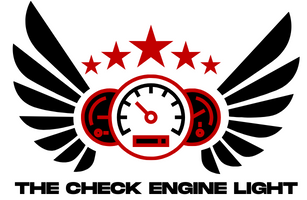


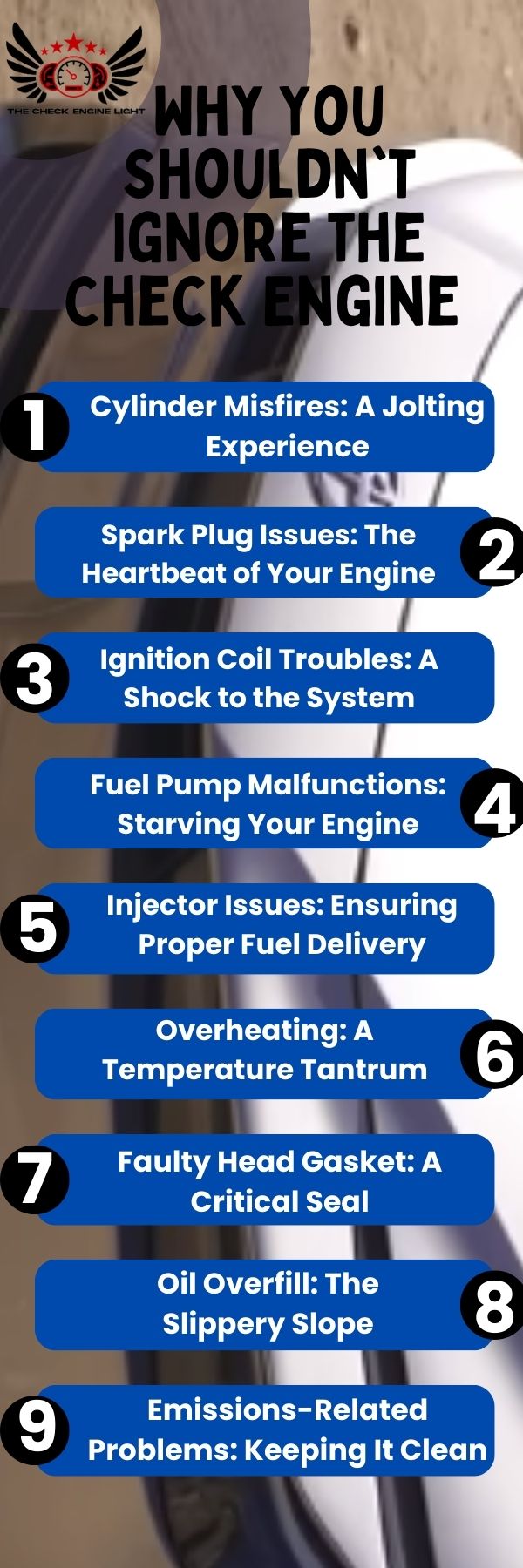
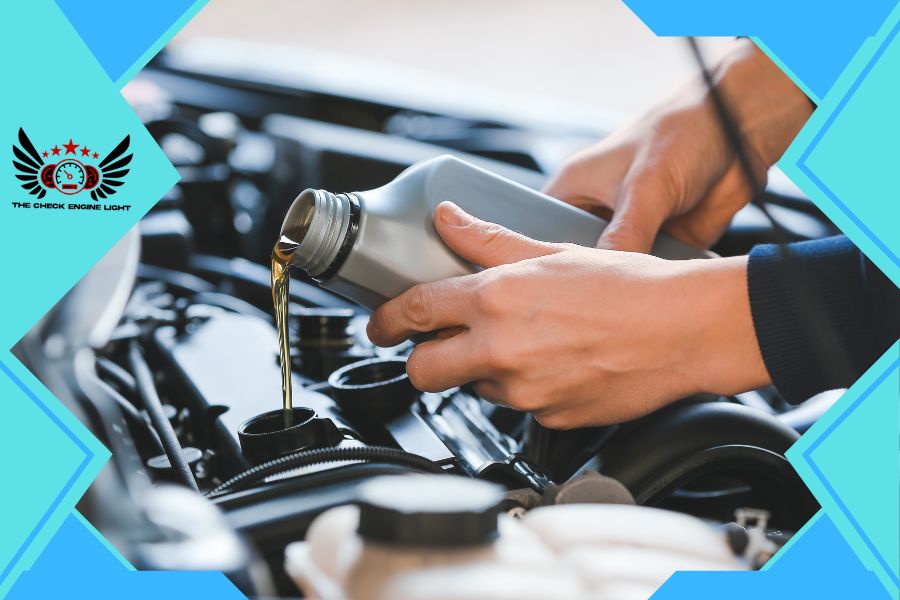
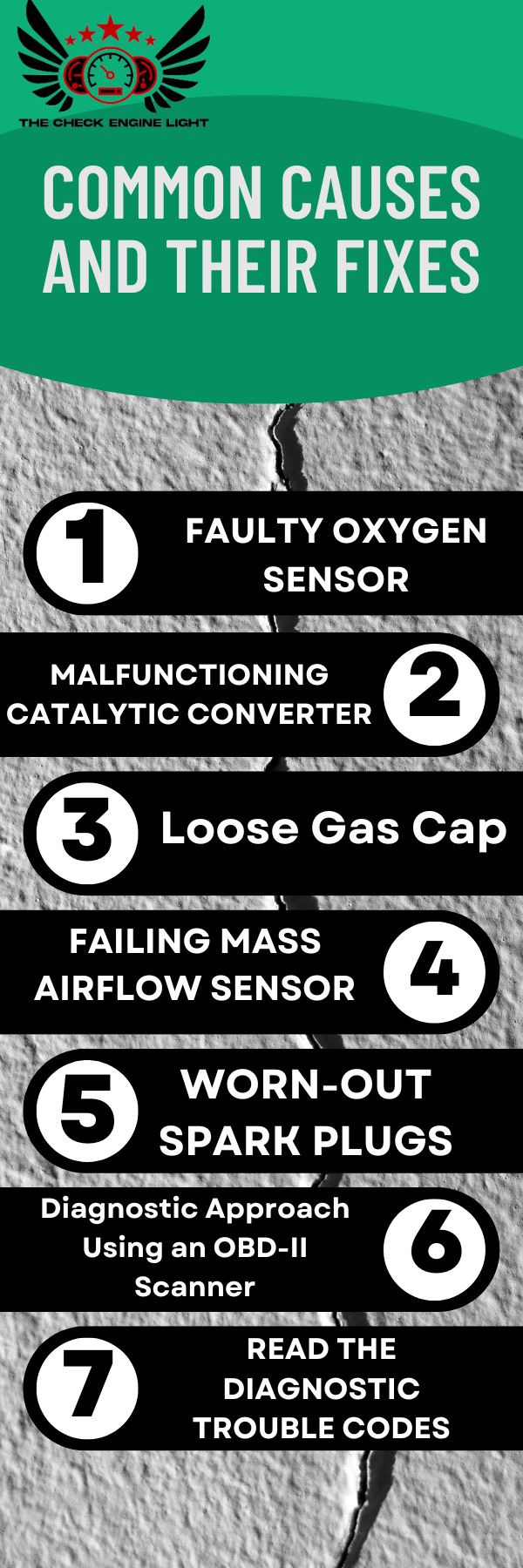
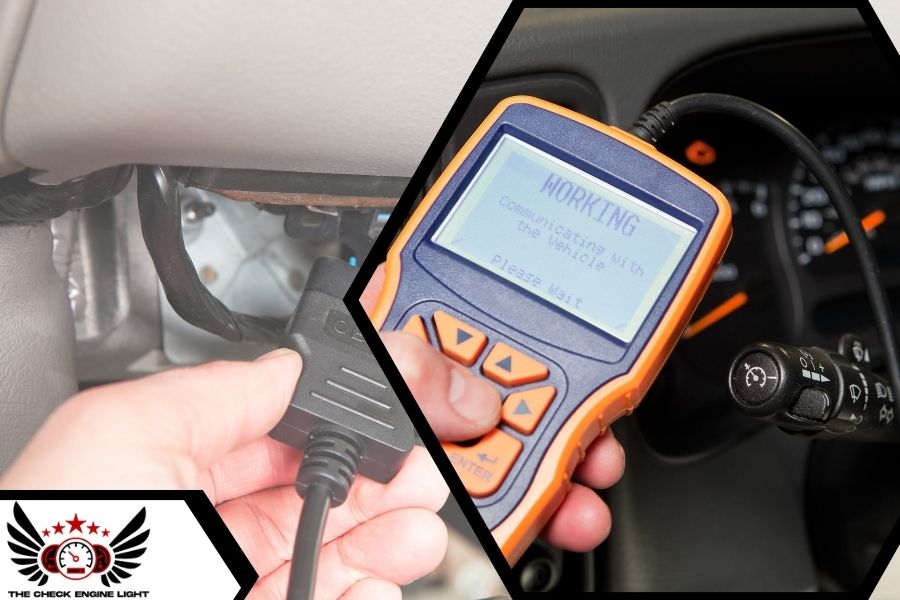
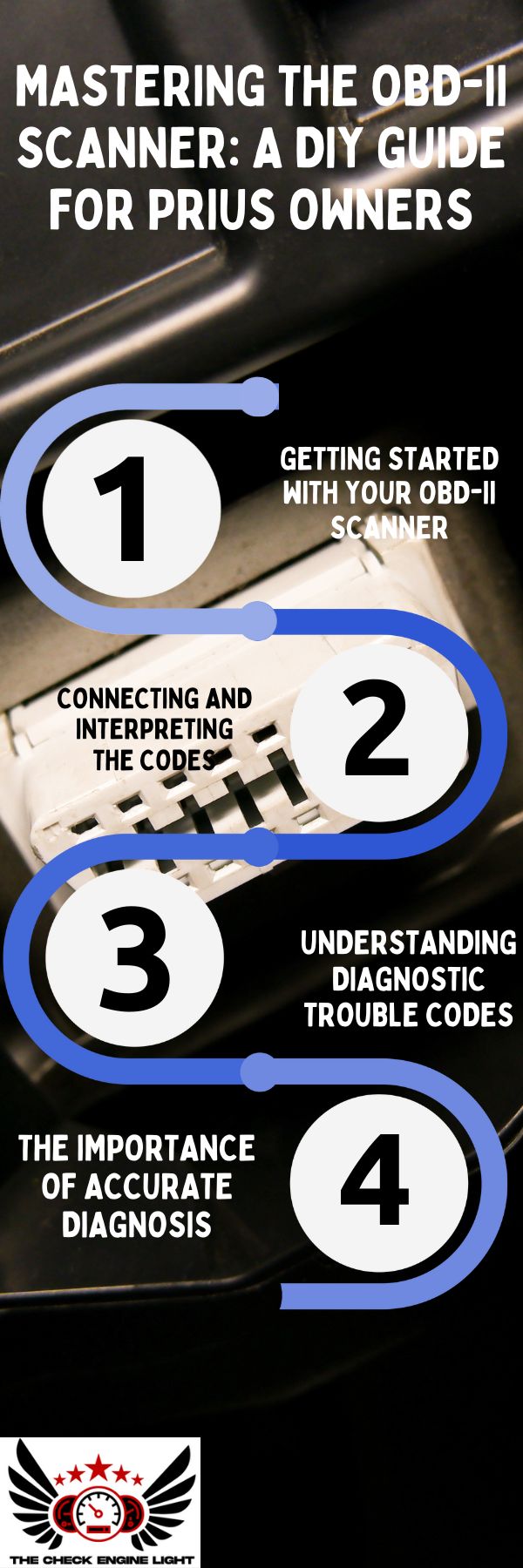
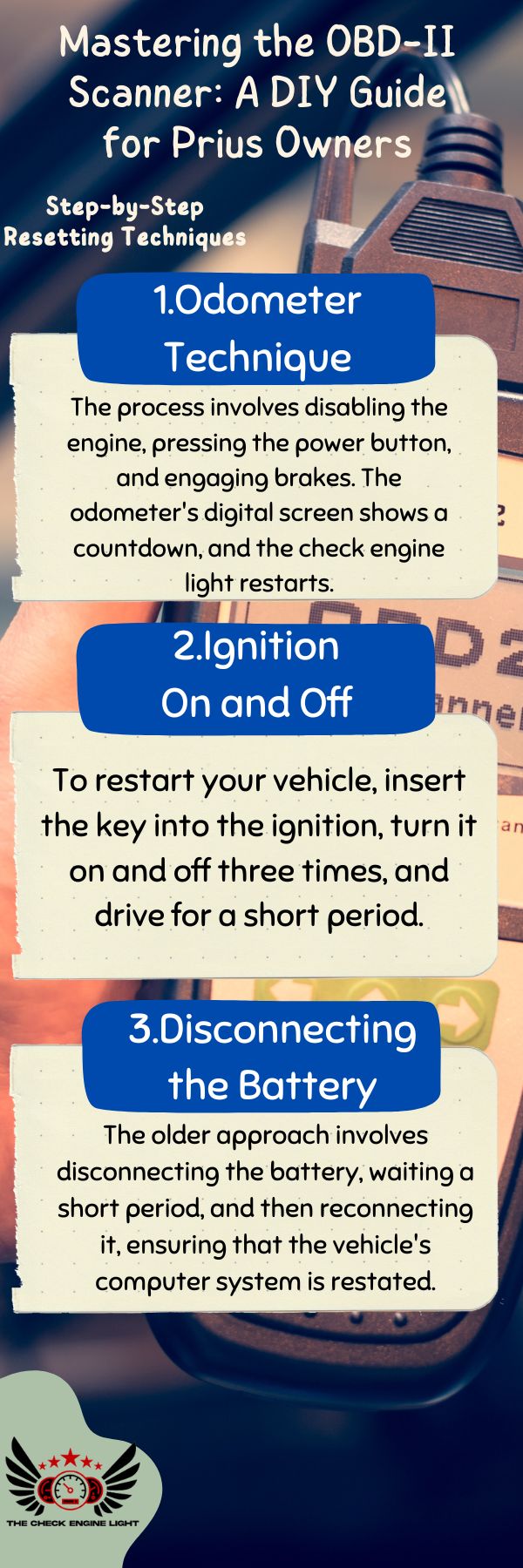
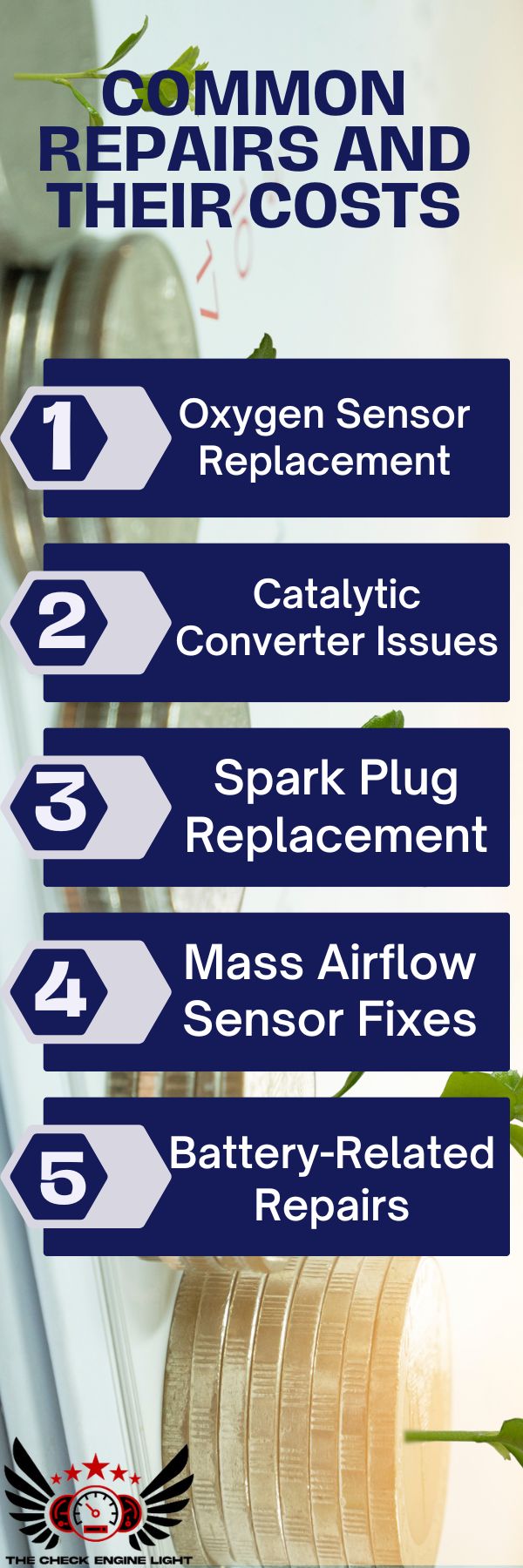
![an pic for Code p0420 Check Engine Light Fully Explained [2024]](https://thecheckenginelight.com/wp-content/uploads/2024/02/Code-p0420-Check-Engine-Light-Fully-Explained-2024-364x225.jpg)
